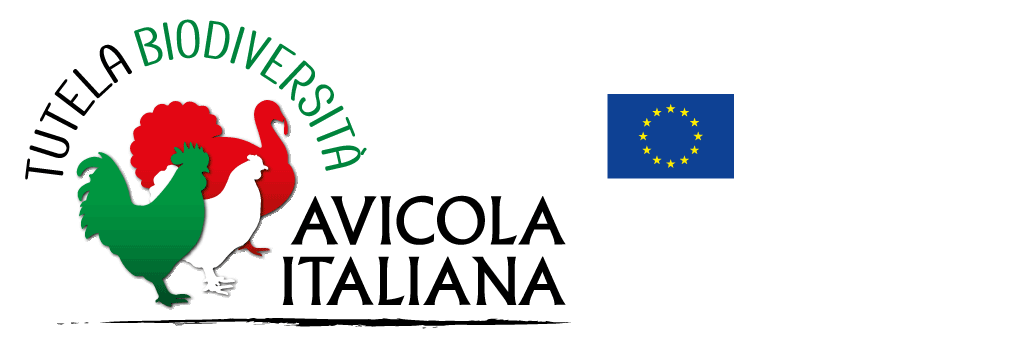Bianca di Saluzzo
Synonyms or local names: Bianca di Cavour
Geographic origin: Piedmont, Marquisate of Saluzzo (Saluzzo and neighbouring villages)
Geographic distribution: Piedmont
Estimated total population size: 874 (Castillo et al., 2021)
Extinction risk status (FAO, 1998): Threatened conserved
Any other specific information: Medium-sized breed
Historical information
News of this breed have been recorded since XIX century, when it was already known for the deliciousness of the meat and for the small size. It was widely distributed in the area of the ancient Marquisate of Saluzzo, in the surroundings of Turin. The town of Cavour, once home of an important poultry market, has especially safeguarded the presence of this breed in local farms, so much that Bianca di Saluzzo breed is sometimes referred to as Bianca di Cavour.
In the 1800s, local farms could sell about half the reared chickens. Hens were reared for family sustenance, in addition to provide eggs and meat to be sold at local markets, in order to buy food that the farm could not produce, such as coffee, sugar, salt and oil.
Up to the half of the last century, Piedmont traditional breeds were quite famous, attracting merchants to local fairs from all over Italy.
Around 1960, due to industrialisation and intensive agriculture, breeders decreased that reared Bianca di Saluzzo, that was replaced by fast growing breeds, with unsavoury meat and not suitable for rural free-range breeding.
Bianca di Saluzzo breed recovery started in 1999, when Slow Food proposed to safeguard and promote endangered products endowed with exquisite organoleptic qualities.
The selection and diffusion of this breed has thus begun, starting from residual animals found in the countryside (www.prodottitipici.provincia.cuneo.it).
Bianca di Saluzzo has been a Slow Food presidium since 1999, when the Professional Institute for Agriculture and Environment of Verzuolo started a careful selection and recovery activity of this slow growing breed, that was close to extinction.
Since 2014, the University of Turin has started a program of conservation and genetic improvement.
Bibliography
Di Francesco G, Falciola R, Lazzaroni C, Moriano G, Regis E (2002) La Bionda, la Bianca e il Grigio. Vol. 1 – La Bionda e la Bianca. Ed. AsproAvic
Qualitative morphological traits
Feather morphology: Normal
Feather distribution: Normal
Plumage structure: Thick and well adherent to the body, abundant cape
Plumage colours: White, with pearl/gold platinum lustre
Colour features: Single-colour, without sexual dimorphism
Colour pattern: Uniform white all over the body, the cape can show pearl/gold platinum lustre in the male
Chick plumage colour: Yellow
Comb type: Simple comb, red, upright in the male, in the female the rear part falls to one side
Comb spikes: Four to seven spikes
Ear-lobe colour: White-yellow (red is tolerated); well-developed in the male
Beak colour: Yellow
Iris colour: Orange
Skin colour: Yellow
Shank colour: Yellow
Shank feathering: Free from feathers
Other specific and distinct visible traits: Red, well-developed wattles
Quantitative morphological traits

Reproductive and productive quantitative traits
Oviposition, brooding and incubation data
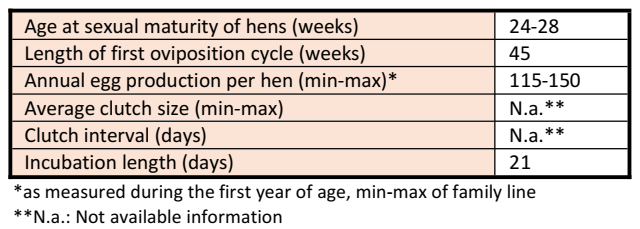
Egg-quality traits

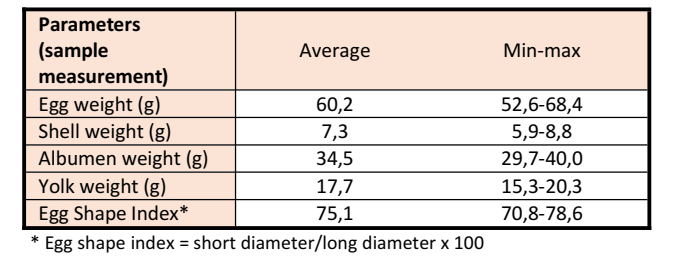
Body weight and growth data
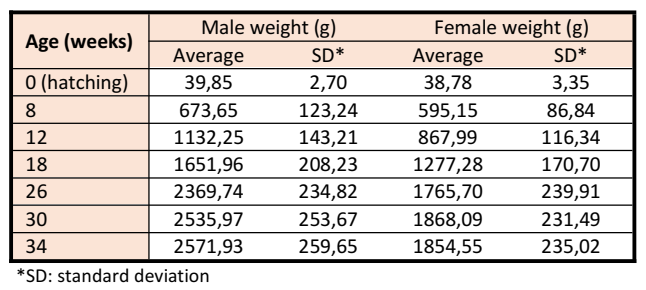
Mortality

Slaughter data

Rearing traits
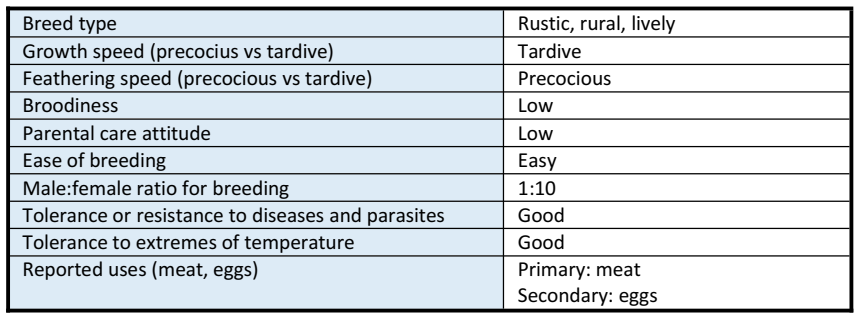
The presented data were registered in nucleus populations conserved at the University of Turin (UniTO).
Latest update: February 17th, 2023
Germplasm collection
The breed is conserved in our Cryobank with 226 semen doses from 12 donors.
